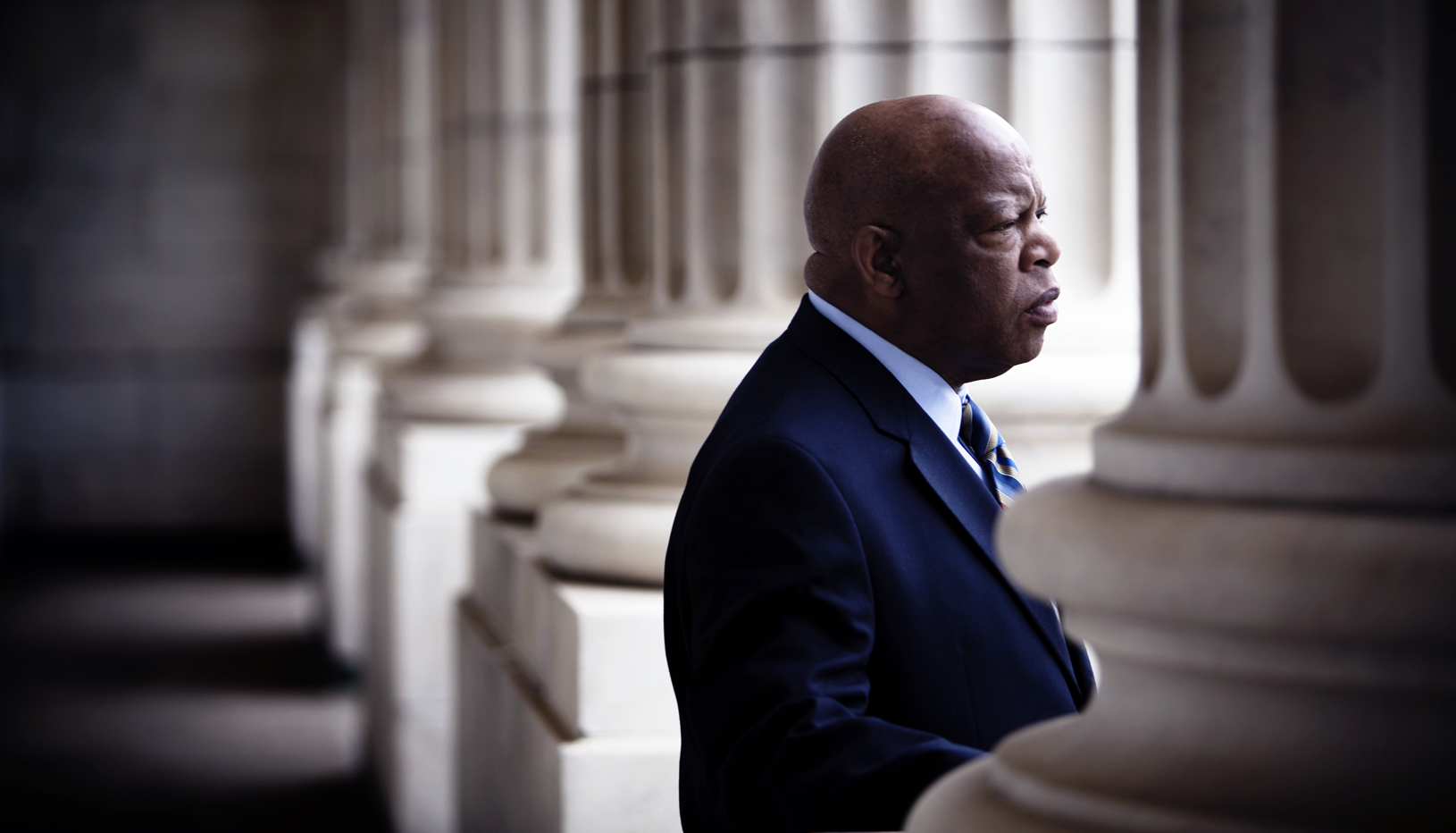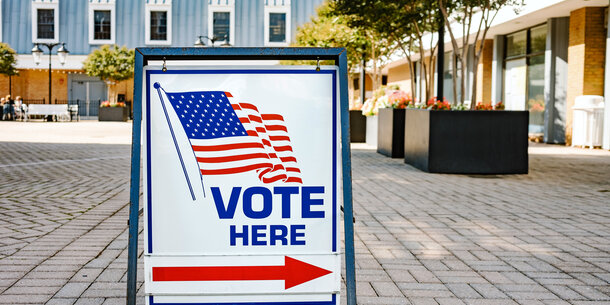The Voting Rights Act of 1965 has been remarkably successful, closing massive disparities in registration rates across racial groups and blocking redistricting plans designed to limit the power of voters of color. Since its enactment, virtually every president — from both parties — has praised the law’s success in curbing discrimination against voters of color. But the law is a shell of its former self. Congress must act to restore it.
In 2013’s Shelby County v. Holder decision, the Supreme Court gutted the Voting Rights Act’s most powerful provision, a rule requiring certain jurisdictions get federal approval for changes to voting as nondiscriminatory before implementation. This process is known as “preclearance.” In the years since, the Court has also made it harder to win suits challenging discrimination in voting. The result: new restrictive state voting laws are passing at a record pace and participation by voters of color is declining.
On March 5, 2025, lawmakers in the House reintroduced the John R. Lewis Voting Rights Advancement Act. Lawmakers reintroduced the bill in the Senate on July 29, 2025. The bill would undo the damage done by the Supreme Court and create a Voting Rights Act for the 21st century. It would restore preclearance in states that are discriminating on the basis of race and create preclearance for certain practices that are frequently discriminatory. It would also bolster Section 2 of the law, which allows lawsuits to ensure voters of color have the opportunity for fair representation.
Voting Discrimination Persists and Is Worsening in Many States
The Supreme Court justified its decision to significantly weaken the Voting Rights Act by suggesting that race discrimination in voting was a thing of the past. That was clearly wrong at the time and it has only gotten worse since.
Discriminatory state voting laws are on the rise. Within 24 hours of the Shelby County ruling, Texas announced it would implement a policy that a court had previously blocked as discriminatory. A federal court later found the strict voter ID law to be intentionally discriminatory. Within two months, North Carolina enacted a slate of voter restrictions that a federal court said targeted Black voters “with almost surgical precision.”
That was just the start. At least 31 states have passed 115 restrictive voting laws since Shelby County, including at least 44 laws in states that were previously subject to preclearance. These include several wide-ranging voter suppression bills with numerous provisions in places like Florida, Georgia, and Texas. In 2021, at least 17 states enacted 32 restrictive laws, while at least 8 states passed 11 new restrictions in 2022, at least 14 states passed 17 restrictive laws in 2023, and at least 10 states passed 19 restrictive laws in 2024.
These laws don’t affect everyone equally, as suppressive voting laws consistently target the ways people of color vote. In Georgia, the legislature supported extensive mail voting for decades, until the 2020 election. After the share of Black voters using vote-by-mail surged in 2020, Georgia’s legislature made it harder to vote by mail. Texas followed the same path in 2021 and Asian and Latino voters were each 50 percent more likely to have their mail ballot rejected than white voters in the state’s 2022 primary. We’ve seen similar patterns in Arizona and Florida, as well.
The racial turnout gap is growing nationwide and grew almost twice as fast in counties that were formerly subject to preclearance before Shelby County. Between 2012 and 2022, the turnout gap between white voters and voters of color in the once covered counties grew by 9 percentage points. In demographically similar counties that were not subject to preclearance, the turnout gap between white voters and voters of color grew by 5 percentage points. Our research uncovering this stark difference after the Shelby County decision accounts for many factors, including which presidential candidates were on the ballot, education, income, and more.
The national turnout gap has grown not just for voters of color, but across racial and ethnic groups. Nationally, the white-Black turnout gap increased by 8 percentage points from 2012 to 2022. The white-Latino turnout gap grew by 4 percentage points over same period. The white-Asian turnout gap has remained above 10 percent from at least 1996 through at least 2020.
Racially discriminatory redistricting has expanded. Mapmakers across the country are minimizing minority voting power. Courts in at least six previously covered states found Congressional maps to be discriminatory since 2021. They will be redrawn for 2024, but the 2022 elections were held under those unfair maps. Had the Voting Rights Act been in full force, they would likely have been blocked ahead of the election, potentially affecting control of the House. Stunningly, in recent years Alabama and Louisiana —who were previously subject to preclearance — have defied a Supreme Court order to fix racial gerrymanders.
What’s left of the Voting Rights Act is not enough to fight voting discrimination. After-the-fact lawsuits alone are not enough where discrimination is pervasive. They take years to resolve before voters see results and often cost millions of dollars. While voters wait for cases to conclude, discriminatory laws and maps remain in effect, and no court ruling can reclaim lost votes. A functioning preclearance system would have stopped many of these laws and maps before they went into effect.
Moreover, as a result of the Supreme Court’s decisions narrowing the scope of the Voting Rights Act, lawsuits filed under Section 2 are more difficult to win. Despite a spike in discriminatory laws, voting rights plaintiffs have won fewer than a dozen since 2010; many of those victories came before the Supreme Court’s 2021 Brnovich v. DNC decision rewrote Section 2 to tilt the playing field heavily in favor of discriminating states. While 2023’s Allen v. Milligan was a positive decision for voting rights, it merely upheld the status quo, doing nothing to correct past harms.
For more detail on the current wave of voter discrimination and how the remainder of the Voting Rights Act is not enough to prevent it, see the Brennan Center’s congressional testimony from May 27, 2021, August 16, 2021, and October 6, 2021.
The John Lewis Act Would Solve These Problems
Only Congress can stop voting discrimination across the country and fix the Supreme Court’s missteps. This bill is precisely crafted meet these problems head-on.
The bill would restore geographic preclearance. We know preclearance works. The Supreme Court acknowledged as much in Shelby County, saying increased participation rates from voters of color were “in large part because of the Voting Rights Act.” Our new study showing the turnout gap is growing much faster in formerly covered counties confirms the effects of the end of preclearance.
When preclearance is required, covered states and subdivisions must prove that a new policy would not make it harder for people of color to vote. This is an easy task for nondiscriminatory laws but not for discriminatory ones. Even the specter of preclearance is a powerful deterrent: covered jurisdictions saw approval for 99.86% of proposed changes when it was in effect, suggesting they rarely attempted to implement harmful policies.
Additionally, the bill’s new framework for determining which jurisdictions are covered by preclearance answers the Supreme Court’s command in Shelby County that the law respond to current conditions. The bill looks only at recent history, consistently evaluating the prior 25 years to see which jurisdictions have continuing patterns of voting discrimination. Because the review period is rolling, states that improve their policies will exit coverage while states that backslide will enter it.
The bill would introduce practice-based coverage. Practice-based coverage requires preclearance for certain practices or policies that are common tools for discrimination, such as removing minority voters from a district through gerrymandering or reducing non-English election materials. Combining this with geographic coverage provides a safety net for voters of color across the country.
The bill would revitalize the ability of litigants to protect their voting rights in court. Preclearance alone cannot catch every discriminatory new law, change existing laws, or stop unofficial changes. In these instances, litigation is crucial. The Brnovich decision departed from Congress’s intent and stacked the deck in favor of states who discriminate against minority voters. The John Lewis Act would undo this damage by restoring fair rules for those seeking to stop discrimination in court.
The John Lewis Act Is Popular
Voters like this bill. Almost 70 percent of voters support it, including 60 percent of independents and half of Republicans. There is momentum in the states, too: six states have passed state level Voting Rights Acts and four more are moving in legislatures.
The Voting Rights Act has also long enjoyed broad bipartisan support from both parties in Congress and the White House. The original act received 80 percent yea votes in the Senate (including 44–17 Democrat support and 17–2 Republican support) and the House passed it 333–85 with similar party margins. For the 1982 amendments, Senate support rose to 85–8 and House support to 389–24. In his signing remarks, President Ronald Reagan praised the law, recognizing that it helps to “make sure the vote stays in the hands of every American.” The Senate passed the 2006 reauthorization 98–0 and the House voted in favor 390–33. President George W. Bush held a signing ceremony at the White House’s South Lawn with numerous voting rights champions in attendance.
Nonetheless, when necessary, the country has made significant progress on voting and civil rights on party line votes. The 15th Amendment, which prohibits states from creating racial barriers to voting, passed Congress in 1869 without a single Democratic vote. In 1992, President George H. W. Bush vetoed the National Voter Registration Act, aka the “motor voter law.” The following year, President Bill Clinton signed it after Congress passed it on a party line vote.
Enacting landmark federal legislation is always a long process. The original Voting Rights Act was the product of over a decade of advocacy and passed only after several weaker measures failed to get the job done. Bringing the Voting Rights Act into the 21st century will take similar perseverance, but nothing compared to what the icons of the civil rights movement endured. Congress must now ensure that their legacy lasts for generations to come.




